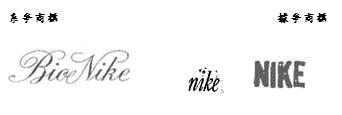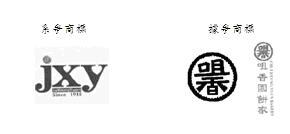The present status of Accelerated Examination of Patent applications (AEP) in Taiwan
[ August 2009 ] >Back| Patent | ||||||||||||||||||||||||||||||||||||||||
| Ⅰ. |
The present status of Accelerated Examination of Patent applications (AEP) in Taiwan. |
|||||||||||||||||||||||||||||||||||||||
|
The Accelerated Examination of Patent applications (AEP) was launched on January 1, 2009 and has developed its own new set of procedures. Until June 30, 2009, 218 patent applications have filed the requests of the AEP. The related statistics are as follows:
In average, it takes about 41.7 working days from filing the requests of AEP to receive the examiners’ official actions or notices of allowance. Until June 30, 2009, 109 patent applications received the official actions or notices of allowance after going through the procedures of AEP. |
||||||||||||||||||||||||||||||||||||||||
| Ⅱ. | Introduction II (to be continued) - main points of the amendment to the current Patent Act | |||||||||||||||||||||||||||||||||||||||
|
The TIPO is proceeding with an overall amendment to the current Patent Act. Since there will be a big change, from February this year, the TIPO has held several public hearings/forums to extensively collect comments to the proposed amendment. We introduce herewith five (5) main points of the amendment to the current Patent Act according to the publication by the TIPO. |
||||||||||||||||||||||||||||||||||||||||
| (1) | Article 25 (amended) | |||||||||||||||||||||||||||||||||||||||
|
The application for an invention patent shall be made by the person entitled to file the patent application by submitting to the Patent Authority an application, a specification, claims, abstract and necessary drawings. |
||||||||||||||||||||||||||||||||||||||||
| (2) | Article 29 II & IV (amended) | |||||||||||||||||||||||||||||||||||||||
|
The applicant shall, within sixteen (16) months from the filing date of the 1st priority date, submit the documents issued by the government of the foreign country declared in the preceding Paragraph evidencing the acceptance of said foreign application. |
||||||||||||||||||||||||||||||||||||||||
| (3) | Article 32 (added) | |||||||||||||||||||||||||||||||||||||||
|
Where an invention patent application and a utility model patent application in respect of the same invention or creation are filed separately on the same day by the same applicant, when the utility model patent has registered as a patent before the allowance of the invention patent application, the Patent Authority shall notify the applicant to select one of such applications for filing within a given time limit; and failure of the applicant to select within the time limit shall cause the dismissal of the invention patent application. |
||||||||||||||||||||||||||||||||||||||||
| (4) | Article 34 II~IV (amended) | |||||||||||||||||||||||||||||||||||||||
| The divisional applications set forth in the preceding Paragraph shall be filed: A. before the re-examination decision on the original application is rendered. B. within 30 days after receiving the notice of allowance for the original application. It is not applied if the original application is allowed after going through re-examination. If divisional applications are accepted, the filing date of the original application shall still be taken as the filing date of the divisional applications, and the applicant shall remain entitled to claim priority. A divisional application can not exceed the scope of the specification, claims or drawings of the original application. |
||||||||||||||||||||||||||||||||||||||||
| (5) | Article 44 (amended) | |||||||||||||||||||||||||||||||||||||||
|
In the course of examining an invention patent application, unless otherwise provided for in this Act, the Patent Authority may, upon a request or ex officio, notify a patent applicant to make an amendment to the specifications, claims and/or drawings within a specified time limit.
|
||||||||||||||||||||||||||||||||||||||||
| Trademark | |
| Ⅰ. |
The trademark right of a well-known mark should not be extended to other trademarks which have been used earlier by others. |
 For the legal case of the above two trademarks published in the Taipei High Administrative Court in 2006 (No. 04147), the registrant of “NIKE” trademark alleged that “BioNike” mark is similar to “NIKE” and violates the Trademark Act, Article 23.I(12): “One that is identical or similar to another person's well-known trademark or mark and hence is likely to confuse the relevant public or likely to dilute the distinctiveness or reputation of the said well-known trademark or mark.” However, the Judge deemed that (1) two marks are not similar to each other, (2) the designated goods of “BioNike” mark are “cosmetics” which are not in the same or similar business fields of “NIKE” mark, (3) according to the evidence as provided, the “BioNike” mark was first used on “cosmetics” products in 1960 and was registered in Italy in 1963 which were earlier than 1971 when the “NIKE” mark was first used in the market. Therefore, it could not declare that the registrant of “BioNike” intended to imitate “NIKE” mark and to make the consumers become confusion in the market by taking the advantage of the well-known “NIKE” mark. Further, the existence of “BioNike” mark would not dilute the distinctiveness or reputation of the said well-known trademark. The registrant of “NIKE” also alleged that the trademark right of a well-known mark shall not be limited in the same or similar goods/ services only. However, as clearly stipulated in Article 30.I(3) of the Trademark Act, the purpose of the protection of a well-known mark is not to let it extend the trademark right to other marks which are used prior to the well-known marks and are continually using in the market. Source: TIPO Chinese Newsletter dated August 5, 2009 (http://www.tipo.gov.tw/ch/News_NewsContent.aspx?NewsID=3884) |
|
| Ⅱ. | The confusion of “concept” of trademarks should be the direct influence but not an indirect one. |
|
|
|

